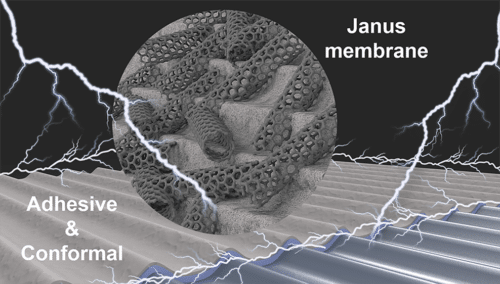
A group of researchers led by Prof. CHEN Tao at the Ningbo Institute of Materials Technology and Engineering (NIMTE) of the Chinese Academy of Sciences have submitted a relatively simplistic approach to developing elastic and conductive Janus membranes with excellent adhesion for advanced flexible electronics.
Owing to the portable, flexible, and soft features, wearable electronics have lately drawn massive attention among researchers, especially in the field of human-machine interaction, mobile health monitoring, and soft robotics. However, the development of skin-like membranes with enhanced interfacial conformality and adhesion via a facile and efficient approach remains challenging. Some marine organisms, like barnacles, have naturally strong adhesion by secreting proteins.
Enlightened by this innovative concept of barnacles, the researchers of NIMTE designed carbon nanotubes (CNTs)/Ecoflex Janus membrane on the water surface through an interfacial assembly. Thereafter, the membrane experienced a two-step curing process, including partial curing for full spreading on substrates and complete curing for enhanced conformal adhesion.
According to the researchers, the Janus membrane can be further incorporated into wearable electronics, thus realizing effective and stable detection of conventional unidirectional bending deformation as well as high-efficiency differentiation of the reverse fine deformation. Additionally, the developed wearable electronics can highly acclimate to the hierarchically wrinkled paper surface, enabling real-time dynamic detection of the paper-folding behaviour.
For a proof of concept, an artificial wrinkled trunk based on the Janus membrane was designed for bidirectional bending deformation monitoring and motion differentiation. This study on the bioinspired membrane with enhanced adhesion may shed light on a more simplistic and efficient fabrication of multifunctional wearable electronics and soft robotics.
This research is supported by the Natural Science Foundation of China, the Open Research Projects of Zhejiang Lab, the Sino-German Mobility Program, etc.
You can read more about the study here.







